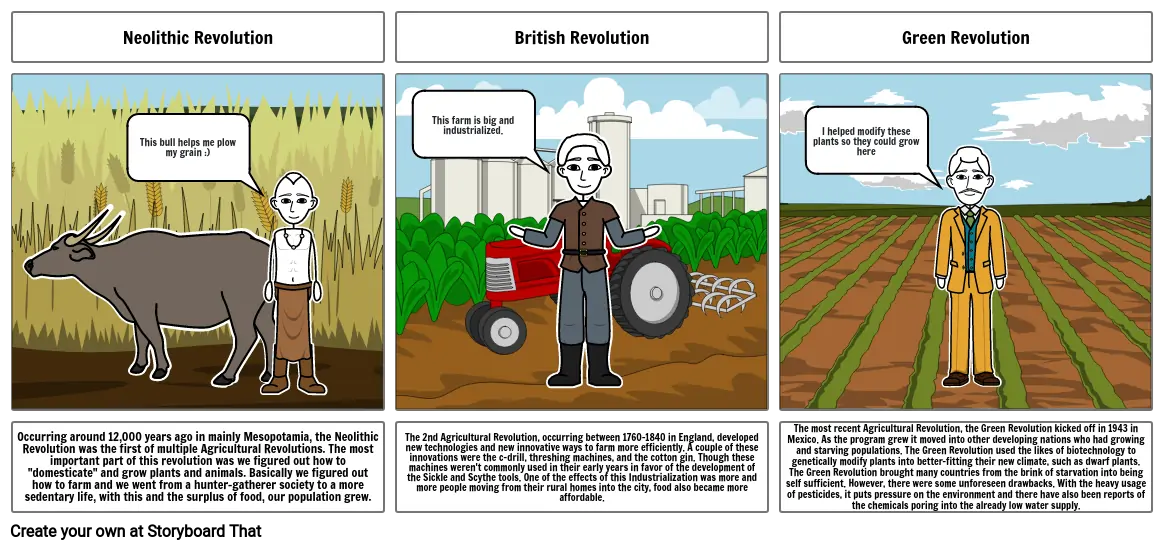Human Geography Agricultural Revolution Project

Storyboard Text
- Neolithic Revolution
- This bull helps me plow my grain :)
- British Revolution
- This farm is big and industrialized.
- Green Revolution
- I helped modify these plants so they could grow here
- Occurring around 12,000 years ago in mainly Mesopotamia, the Neolithic Revolution was the first of multiple Agricultural Revolutions. The most important part of this revolution was we figured out how to "domesticate" and grow plants and animals. Basically we figured out how to farm and we went from a hunter-gatherer society to a more sedentary life, with this and the surplus of food, our population grew.
- The 2nd Agricultural Revolution, occurring between 1760-1840 in England, developed new technologies and new innovative ways to farm more efficiently. A couple of these innovations were the c-drill, threshing machines, and the cotton gin. Though these machines weren't commonly used in their early years in favor of the development of the Sickle and Scythe tools. One of the effects of this Industrialization was more and more people moving from their rural homes into the city, food also became more affordable.
- The most recent Agricultural Revolution, the Green Revolution kicked off in 1943 in Mexico. As the program grew it moved into other developing nations who had growing and starving populations. The Green Revolution used the likes of biotechnology to genetically modify plants into better-fitting their new climate, such as dwarf plants. The Green Revolution brought many countries from the brink of starvation into being self sufficient. However, there were some unforeseen drawbacks. With the heavy usage of pesticides, it puts pressure on the environment and there have also been reports of the chemicals poring into the already low water supply.
Peste 30 de milioane de Storyboard-uri create

